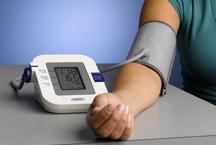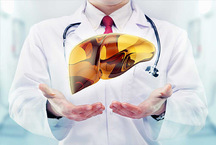
In the summer season, the topic of poisoning is especially relevant: there are mushrooms and berries, it is not always possible to keep track of children who are able to put any blade of grass in their mouths or hold some products in the sun for several hours. The level of sanitation in summer conditions is also decreasing, possibly poisoning by stale products.
Symptoms of food poisoning are usually: lethargy, nausea, vomiting, abdominal pain, diarrhea, fever, in some cases - a rash on the skin, if the poisoning is caused by some chemical substance, shortness of breath, dizziness, severe weakness, blurred vision.
But the same symptoms may be signs of the onset of serious illness. Therefore, do not self-medicate - only a doctor can make an accurate diagnosis! In the article we will tell how to provide first aid in case of poisoning before the arrival of the doctor - or to cope with the most mild poisonings of known origin.
Step 1: diagnosis of poisoning
To properly provide first aid - you need to know exactly the cause of the poisoning. Symptoms similar to poisoning are inherent in a number of infectious diseases and inflammatory processes. If there is pain, ask the victim to show where they are located. If it shows on the right side, it is quite possible that an attack of appendicitis is possible, and then you need to urgently send the person to the hospital. If blood is visible in the stool, it is a sign of a serious infectious disease, even cholera. Such a patient can only be given chamomile tea or green tea so that there is no dehydration, but it cannot be treated at home. And also do not treat at home in the presence of convulsions, blackout or loss of consciousness. In no case do NOT put a heating pad on your stomach until you know exactly what the cause of the disease.
Ask the patient: what he ate, what he drank, what grass he chewed, what he was treated to, whether it seemed that the food tastes strange, if he did not bother with sprayers and other chemicals. As a rule, it helps to identify the cause of the poisoning. Measure the temperature, with food poisoning, it usually rises to 38 degrees.
Gently feel the patient's abdomen (position on the back, knees bent): in case of poisoning, the pain usually accumulates in the stomach, just above the navel.
Step 2: prepare everything you need
If the poisoning is caused by food, drink, accidental use of pills, etc., to help the patient will need to wash the intestines. To provoke vomiting, we prepare a liter of warm boiled water with additives (choose one that is on hand):
- two or three bags of chamomile or mint, brewed in 100 g of boiling water;
- potassium permanganate (diluted in a separate pot a few dozen grains, when they dissolve, pour into a common dish, the color of the solution is pale pink);
- 2-3% soda solution;
- green tea (0.5 teaspoons per 100 g of boiling water, brew, let stand for 10 minutes, then pour into a container with water through a sieve).
Approximately the same proportions are observed when preparing the solution for an enema, only recalculated to the required volume (0.5 l for a child, 1 l for a teenager, 1.5-2 l for an adult).
We spread an oilcloth on a couch or bed, cover it with a towel - an enema will be made here.
Step 3: Removal of the poison by the method of provoking vomiting
There is no need to persuade an adult person, he himself understands the need to clear the stomach of undesirable substances. The child should be affectionately explained how this procedure will help him, to convince him to drink water (he just needs a half-liter mug). It is desirable that the patient drank disinfectant decoction near the toilet or basin, because vomiting can begin suddenly.
If all the water is drunk and vomiting does not occur, advise the patient to put two fingers, index and middle, on the root of the tongue. A child during vomiting should be held so that he does not lean too low - food particles can get into the respiratory tract, the patient can lose balance. As a rule, within 3-5 minutes, almost all the water along with the particles of the eaten food, comes out vomit. After that, you should give the patient some rest and give him some mint or chamomile tea.
Step 4: Cleansing the intestines with enema
The patient is placed on a covered oilcloth on his left side, with his legs bent at the knees. The tip of the enema must be oiled with petroleum jelly or vegetable oil, so as not to injure the rectal mucosa. You need to enter it approximately ¾ length. If this is an Esmarkh mug, it should be raised to the maximum height, and the patient should be asked to “breathe in the stomach” (inhale - protrusion, exhale - inhale), so the healing solution will pass into the intestine faster. If the enema - do not press too hard, even if the healing agent enters the large intestine gradually. If there is a urge to have a bowel movement, stop entering the solution and take the patient to the toilet, if not, enter the entire contents, wait a few minutes and take it to the toilet. Almost all the water mixed with feces will come out. After an enema, the urge to stool may occur several times, this is normal.
Step 5: Additional bowel cleansing
If the temperature does not drop and it is not possible to achieve proper bowel cleansing, laxatives should be used. This reduces the absorption of toxins through the walls of the small intestine.
The most proven remedy is magnesium sulfate. Children - 1 tsp. l, teens - half the table. l., adults - 1 stol.l. The drug has an unpleasant taste, so it is dissolved in 100 g of water, drunk in one gulp and washed down with plenty of liquid (water, tea without sugar, mineral water without gas). If the result is not achieved, after three hours you can give the patient another dose.
Step 6: Prevent Dehydration
In case of poisoning, in the process of vomiting and diarrhea, the patient's body is greatly dehydrated, and this is harmful, especially in the summer. To assist, you need as often as possible to offer the victim drink: tea with lemon, water with lemon, mineral water without gas, decoction of chamomile or mint. During the first six hours after the onset of signs of poisoning, the patient should drink up to three liters of water. If dehydration cannot be managed in time, convulsions, severe dizziness, photophobia and other unpleasant symptoms that can be easily prevented at home can occur.
Sometimes only drinking is not enough, and a decrease in the number of sodium ions in the body is undesirable. Then apply salt solutions: rehydron or humane electrolyte, they allow you to maintain a normal water-salt solution in the stomach. If there is no pharmacy nearby, you can simply add a little coarse salt to your drinking water (half tea liter per 2 liters of warm boiled water, stir well, strain).
A good help in case of poisoning will also be Smecta. There are no options, there is an orange flavor, his child will drink with great pleasure.
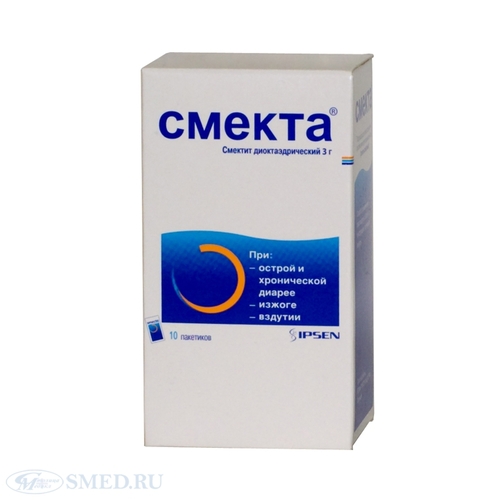
Photo: www.smed.ru
By the way, the smectum not only prevents dehydration, but also has the properties of a sorbent - it absorbs foreign substances, preventing them from affecting the body.
Step 7: removal of pain and swelling of the intestine in case of poisoning
In case of poisoning, severe pain is not uncommon. How to help? Order a simple remedy called “Humana - a calm tummy”
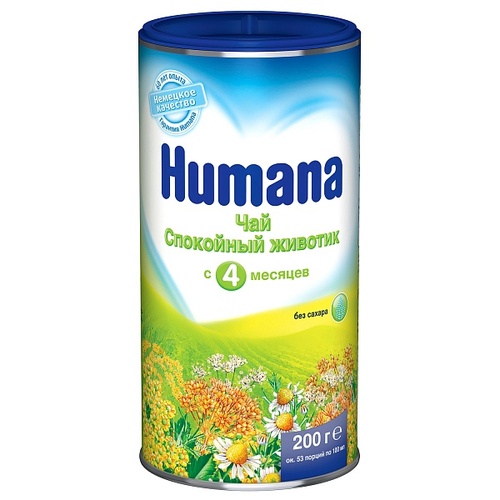
or its analogue "Humana - tea fennel with cumin"
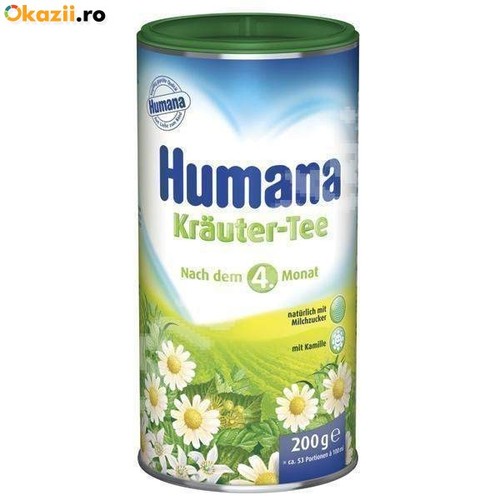
Photo: images4.okr.ro
Do not be surprised that these are baby tea mixes: the drugs are generally intended to normalize the activity of the gastrointestinal tract in children, but they can also help adults, since they have an antispasmodic effect (in other words, relieve cramping pains and relax the intestinal muscles) have an antibacterial effect.
Both of them are of natural origin, consist of medicinal herbs with fruit additives, the taste is pleasant, they can be drunk as tea.In the composition - anise (spasmolic and antibacterial agent), fennel (normalization of the gastrointestinal tract, antibacterial action), chamomile (antibacterial, antiseptic and mild sedative effect), cumin (antispasmodic effect and production of gastric secretion), maltodextrin (supplier of biofidobacter). actively fighting alien microflora). It begins to act in ten to fifteen minutes.
Step 8: the use of sorbents
We managed to remove a significant part of the harmful substances from the patient’s body at the first stage by washing the stomachs and cleaning the intestines. But those that remain in the body also need to be neutralized. This purpose is served by a group of drugs - sorbents.
As a rule, in the home first aid kit is activated carbon. It has average efficiency, but is at hand. You can order a universal and very effective sorbent "Enterosgel".

Photo: krasnodar.askorbin.ru
It helps the early binding of harmful and hazardous substances, removing them from the body. The drug "recognizes" toxic elements, binds and removes only them.
There are other means, but the above two have a minimum of side effects, they should not be used only with a stomach ulcer and 12 duodenal ulcer, so as not to injure the intestinal mucosa.
Step 9: Normalize Intestinal Functions
If the poisoning is accompanied by frequent bowel movements, diarrhea, nausea, which do not pass in the first hours - how can you help?
First of all, DO NOT ATTEMPT stop diarrhea Keep away from imodium and other drugs of similar action. Diarrhea is a protective reaction of the body to the penetration of foreign poisonous substances into it. Watch that the patient's body is not dehydrated. It is recommended to wash the area of the anus once every two hours, soak it, lubricate it with baby cream or vegetable oil applied on a cotton wool to avoid irritation and painful sensations. For the first two days, diarrhea should not be stopped.
If the temperature drops, there is no blood and pus in the feces, antibiotics do not need to be applied, they destabilize the intestinal microflora even more. The liver can be maintained with the help of mezim, Kars, Essentiale. If there is no pain in the liver, it is not necessary to give these drugs.
Step 10: Diet for Poisoning
Poisoning is a serious injury to the gastrointestinal tract. The first twelve hours is recommended to abstain from food. If the patient is hungry, he can be given light lactic acid products (bioyogurts without additives, ryazhenka, actimel in bottles). A little later - a soft-boiled egg and mashed potatoes without butter, semolina, crackers, tea with lemon, jelly. After poisoning, the patient should be on a sparing diet for at least three to four days.
And additional tips:
- conduct preventive conversations with children about the fact that you can not try unfamiliar berries, herbs, mushrooms - some of them may be poisonous;
- if within six hours there is no improvement in the patient’s condition, Do not risk the health of loved ones - be sure to take the patient to the doctorbecause the symptoms of many diseases are similar;
- if antibiotics were not given to the patient, it is recommended to hand over the feces to bacposev - this will make sure that the poisoning did not have an infectious nature and the patient does not need quarantine;
- so as not to have an inflammatory process in the intestines, within two weeks Do not add heavy food to the patient’s diet: fried meat, smoked fish, spirits or beer, ham, sauerkraut, pickles;
- strictly follow the rules of hygiene when cooking, check the labeling, if the shelf life of certain canned goods has not expired, ruthlessly throw away the swollen banks, make sure that everyone in the family washed their hands with soap and water before eating.
And do not let all the above troubles affect you!



